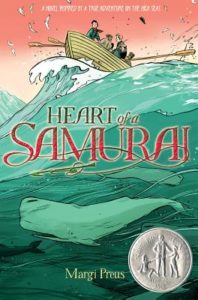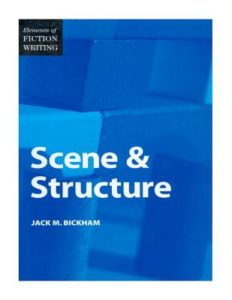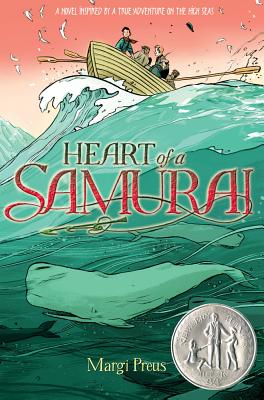Craft Review by LA Biscay
 I’ll admit it. I’m a map junkie. I can’t get anywhere without GPS. Even before that technology, I was the road trip companion with a stash of fold out paper maps, ready to highlight the best roads for our journey. Maybe that’s why I’m a plot junkie. I need to know where my characters are going before I hit the keyboard.
I’ll admit it. I’m a map junkie. I can’t get anywhere without GPS. Even before that technology, I was the road trip companion with a stash of fold out paper maps, ready to highlight the best roads for our journey. Maybe that’s why I’m a plot junkie. I need to know where my characters are going before I hit the keyboard.
However, I get tangled up in the small details (otherwise known as words) in making my character’s journey believable. Turns out, there’s a roadmap for line-by-line structure in a novel that can help. It’s call Stimulus and Response, a term used by Jack M. Bickham in his instructional book, Scene and Structure.
Stimulus and Response Defined
Bickham describes Stimulus and Response (S/R) as a transaction. It is a chain reaction of Cause and Effect: one event evokes a response, which provokes another event, followed by another response.
 Stimulus is anything the POV character witnesses in action or dialogue. For every Stimulus, the POV should offer an immediate Response, whether internal, external, or both. Bickham provides examples, such as “this punch making the other duck” or “this question making the other person reply.”
Stimulus is anything the POV character witnesses in action or dialogue. For every Stimulus, the POV should offer an immediate Response, whether internal, external, or both. Bickham provides examples, such as “this punch making the other duck” or “this question making the other person reply.”
Bickham breaks down Response into a logical pattern. The first part of Response is Internalization (feelings/thoughts), followed by Action (physical/dialogue/both.)
Stimulus ⇒ Response
Internalization (feelings/thoughts)
Action (physical/dialogue/both)
Response is an integral part of microcosmic structure in fiction. Otherwise, a novel is merely a string of events, and without the characters Response, the reader is left to interpret what all the events mean without an emotional roadmap. Response can be simple or complex, and a well-crafted Response builds character empathy and ensures believability in the plot.
Stimulus and Response sounds great, but I wanted to see it in action and determine whether it’s effective. I’ve been reading Heart of a Samuri by Margi Preus, a 2011 Newbery Honor, and it provides a perfect scene for S/R analysis.
Stimulus and Response in Action
Heart of a Samuri is a fictionalized account of a 19th century Japanese boy named Manjiro Nakahama, who was stranded with his fishing crew on a deserted island and rescued by an American whaling ship.
Skipping ahead to Chapter 3 (after backstory, setting, and some time jumps, which involve more complicated S/R), I used the highlight function on my iPad to isolate Manjiro’s Responses, and voilà, the entire chapter is a string of Stimulus and Response.
In his unique voice, Manjiro describes the strangers that rescue him, starting with their foreign shoes. That’s the Stimulus. Manjiro’s subsequent Response:
“Manjiro shuddered. These were certainly barbarians if they killed animals to make shoes! Such a thing was against the law in Japan.”
We have the reflexive action of shuddering, which implies the FEELING of fear or apprehension or disgust, followed by Manjiro’s THOUGHT process (but no Action in this example.) From the information provided in the first two chapters, I already know that Manjiro is afraid of the unknown barbarians, so I expect this emotional response. The addition of Thought adds voice to his character/background. I continue to believe in the story, and I’m interested in reading more.
Manjiro describes their strange faces. His Response: “No matter how odd-looking or dangerous they were, Manjiro had to choke down his fear and ask them to help his friends.
‘My friends are still on the island,’ Manjiro said.”
Manjiro’s Response includes Feeling, Thought and Action (in the form of dialogue). I know his crew is starving, so his emotional reaction makes sense.
Next, Manjiro’s crew is taken to the whaling vessel. Manjiro is impressed by the sails, and his dialogue serves as the Stimulus: “’Look at all those sails!’ Manjiro said. [Response:] ‘They are like huge wings!’ In a ship like that, he thought, you could go so far and so fast, you could sail clear off the edge of the earth. The thought filled him with both fear and exhilaration.”
I like this complicated S/R example. The first line of dialogue doubles as Stimulus and Feeling. Manjiro’s Thought and subsequent Feeling foreshadow how far he will travel on this ship.
Then Manjiro and his crew are instructed to sit on benches, which are too high for their shorter stature. The older fishermen predict that the torture and humiliation is just beginning. Manjiro’s Response: “’Maybe they won’t humiliate us,’ Manjiro said hopefully.
This line of dialogue and one adverb set up the final S/R transaction at the end of the scene. Manjiro and his crew are offered food, but the older fishermen caution it might be poisoned. Response: “Manjiro didn’t care if the rice were poisoned. He gobbled it up gratefully. And the soft, steaming sweet potato. And the warm broth. And the half cup of cool, fresh water. [Next Stimulus:] And finally, a strange kind of food was placed in his hands.
[Response:] Manjiro bit off a piece. It filled his mouth and made hard work for this teeth.
‘Bread,’ the sailor called it.”
My verdict: This scene in Heart of a Samuri demonstrates a successful use of Bickham’s Stimulus and Response transactions. The action/plot flows in a logical manner, and I believe in Manjiro’s responses. I empathize with him, which means I will keep reading to find out what happens next.
In first drafts of my own manuscripts, writing a full Response to each Stimulus will ensure that I understand how my characters are feeling at every turn. Each Response serves as a road sign to keep my characters on course and keep me from getting tangled up in the words. If I can finesse Response in subsequent drafts, I’m elevating my craft while propelling my characters along their journey.
Action: Analyze a scene from your work-in-progress using Stimulus/Response. Fill in what’s missing. Make sure your main character has a Feeling, Thought, Action response to every Stimulus.
LA Biscay writes children’s books and dances everyday, if only down the hall. As a teacher of Creative Movement, she enjoys assembling basic dance elements into unique combinations. It’s probably why she’s a fan of story structure! LA is an active member of SCBWI. She lives in the San Francisco Bay Area with her husband, children, super dog, and a brood of chickens that lay green eggs. Yep. Green eggs.


Thanks Lynn Anne. This was very interesting and something I will take with me in my own writing.
Love this. Great food for thought. Thank you!!
Love your highlighting technique! This article is going to help raise my awareness of stimulus/response in picture book manuscripts as well.